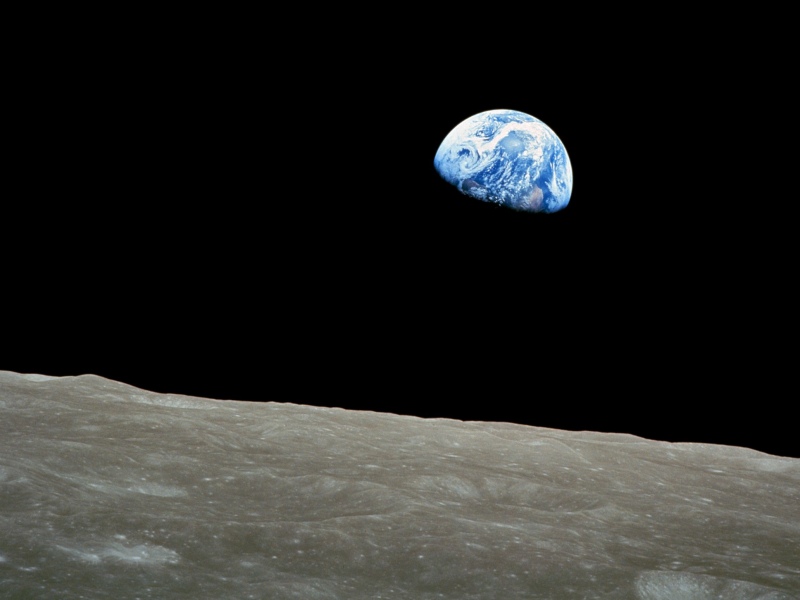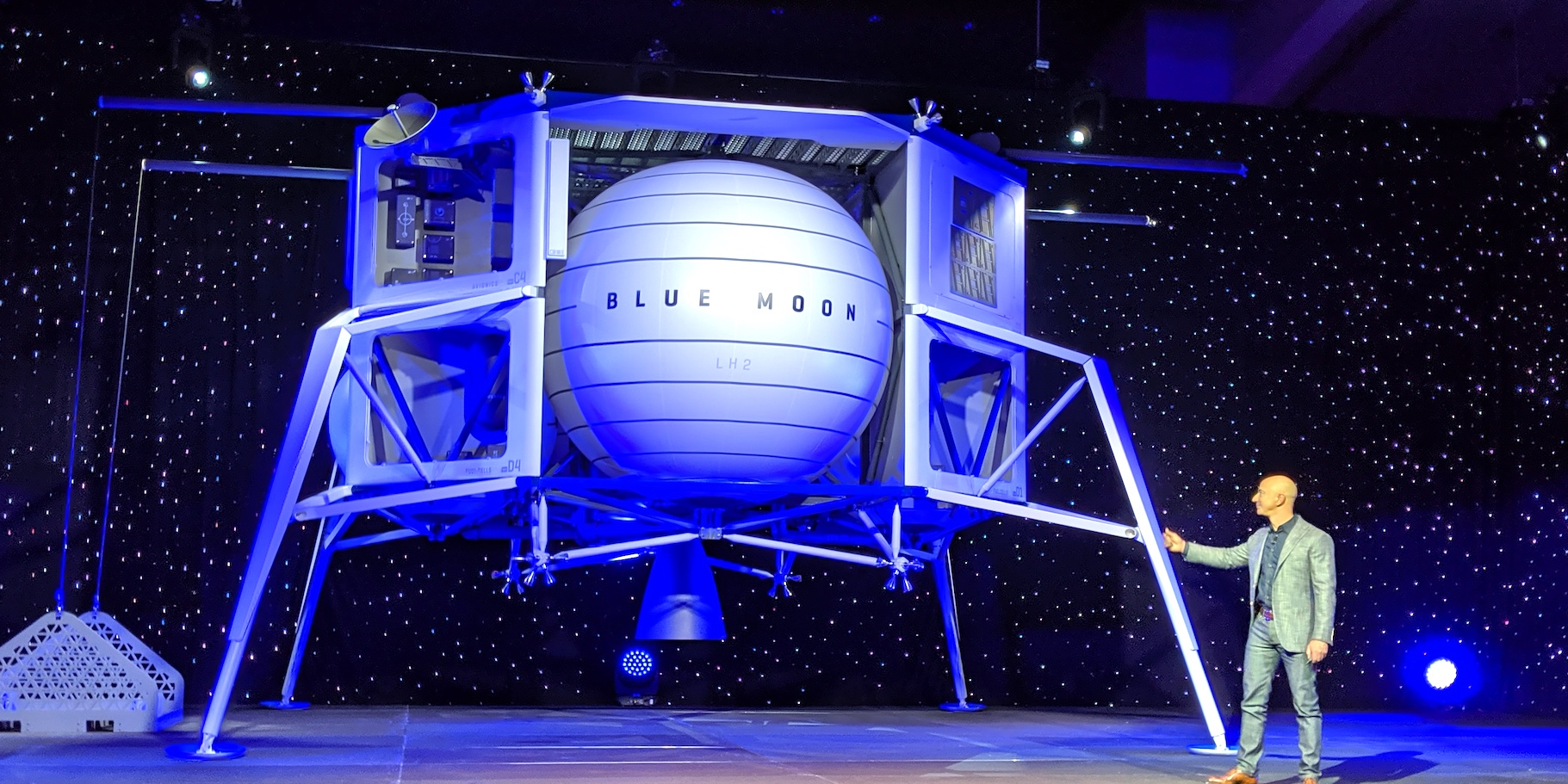- Jeff Bezos, the founder of Amazon, unveiled a life-size model of a new moon lander on Thursday for his rocket company, Blue Origin.
- Called “Blue Moon,” the vehicle is designed to deliver a variety of payloads to the moon’s surface – potentially even astronauts.
- Here’s what Blue Moon looks like and what Bezos says it will do.
- Visit Business Insider’s homepage for more stories.
WASHINGTON, DC – Jeff Bezos just unveiled a giant lunar-landing vehicle created by his rocket company Blue Origin.
The Blue Moon lander, as it’s called, is designed to be a flexible vehicle that can deliver a variety of payloads to the moon’s surface – perhaps one day even astronauts. The eventual goal, the company says, is to help establish “sustained human presence” on the moon.
“This is an incredible vehicle, and it’s going to the moon,” Bezos said at an event in Washington, DC, on Thursday afternoon.
Bezos added that Blue Origin has been developing Blue Moon over the last three years. (The company had been teasing the idea of such a lunar lander for about two years.)
The model of the Blue Moon lander that Bezos revealed is the version designed to carry infrastructure payloads to the moon. That could include small rovers, supplies, tools, and other equipment. In the future, though, Bezos said a more powerful variant of Blue Moon could drop off a crewed ascent module.
According to the company's website, this larger variant of Blue Moon "has been designed to land an ascent vehicle that will allow us to return Americans to the moon by 2024." But a vehicle designed for people was not shown at the event.
Here's how the Blue Moon lander is slated to look, and what it might achieve.
Bezos envisions Blue Origin as a company that builds a figurative road to space, where resources are practically infinite — and, he thinks, a trillion people could someday live.
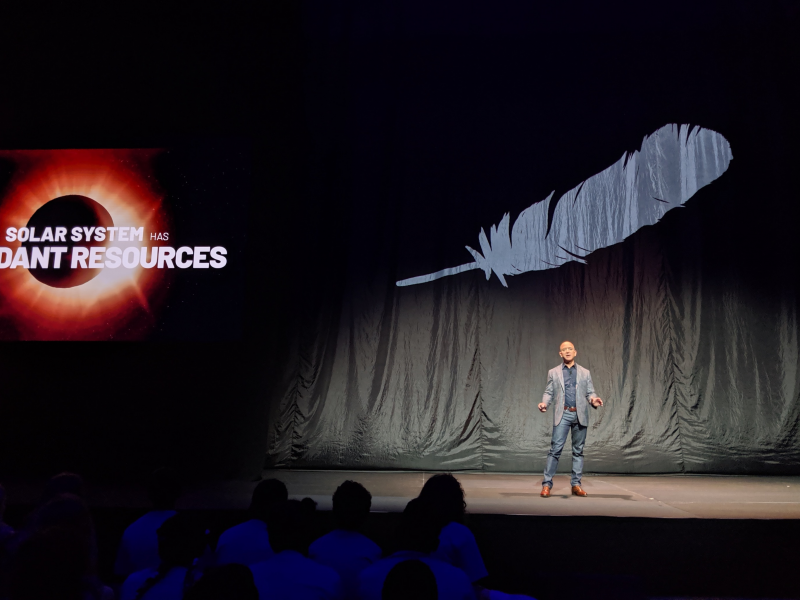
As part of that long-term vision, Bezos on Thursday unveiled a life-size model of the Blue Moon lunar lander.
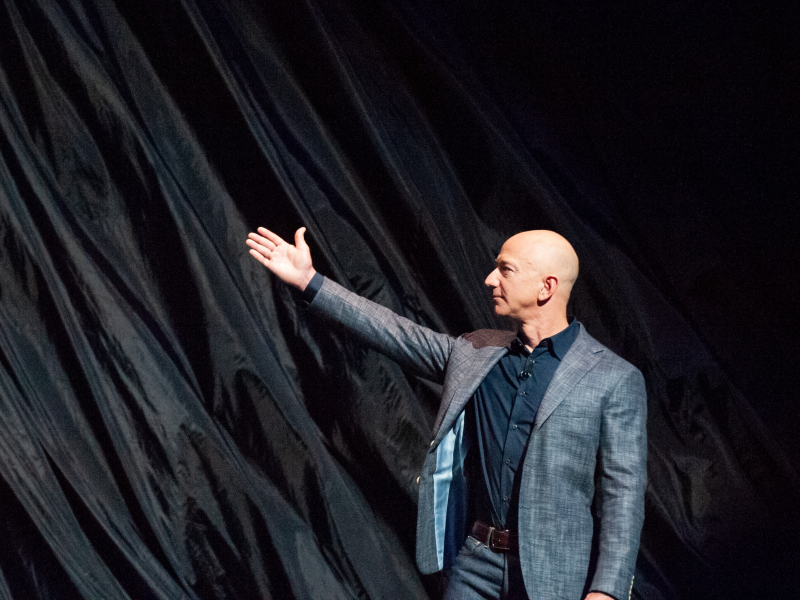
The spacecraft is designed to carry tanks of liquid hydrogen and oxygen because they combust together very efficiently.
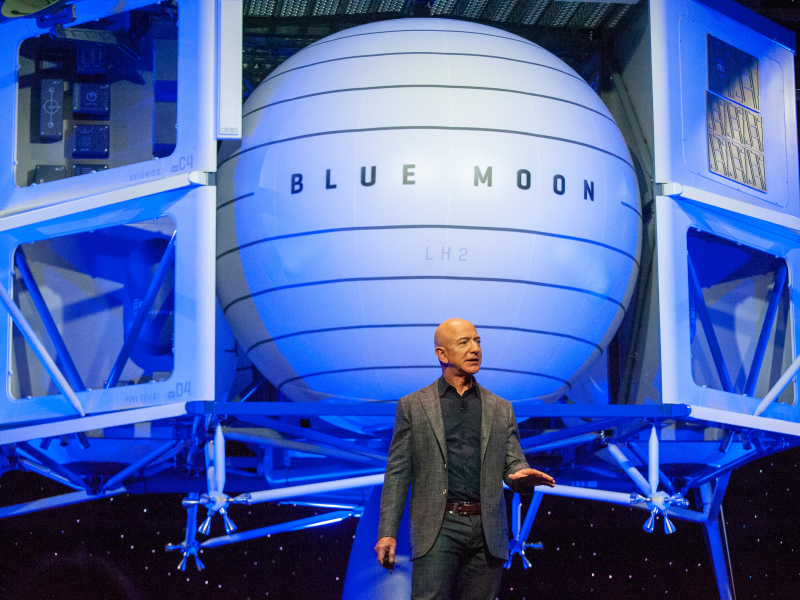
The fuels can also be made on the moon from lunar ice deposits. Bezos said Shackleton Crater, located at the lunar south pole, is a promising target to extract frozen water and split it into hydrogen and oxygen.
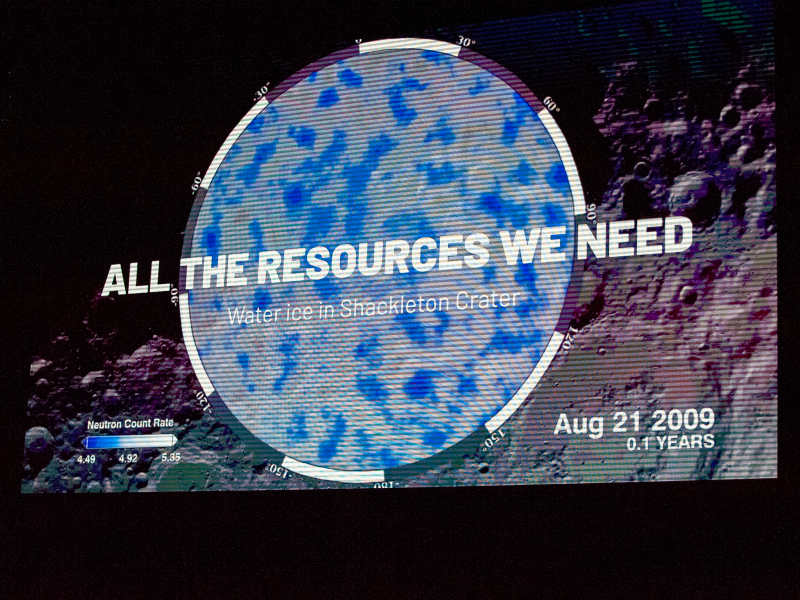
The vehicle's tall legs are designed to help it avoid obstacles like rocks and boulders. It's just under 23 feet (7 meters) to a side.
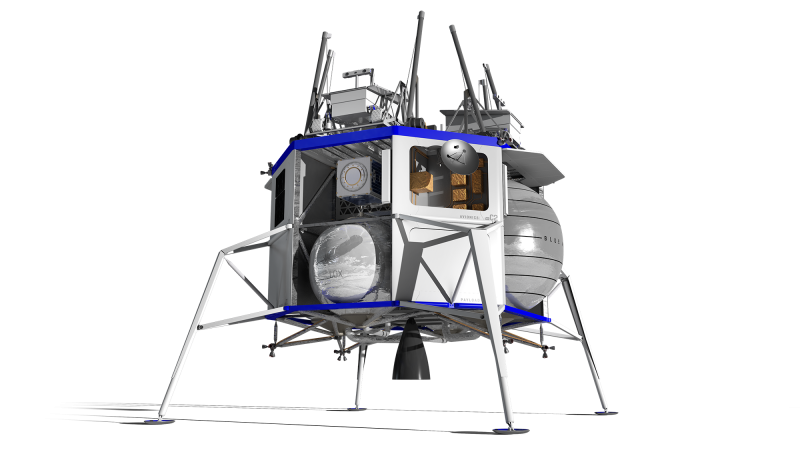
By no coincidence, that's just under the maximum size Blue Origin expects to fit in the nosecone of its upcoming New Glenn rocket system.
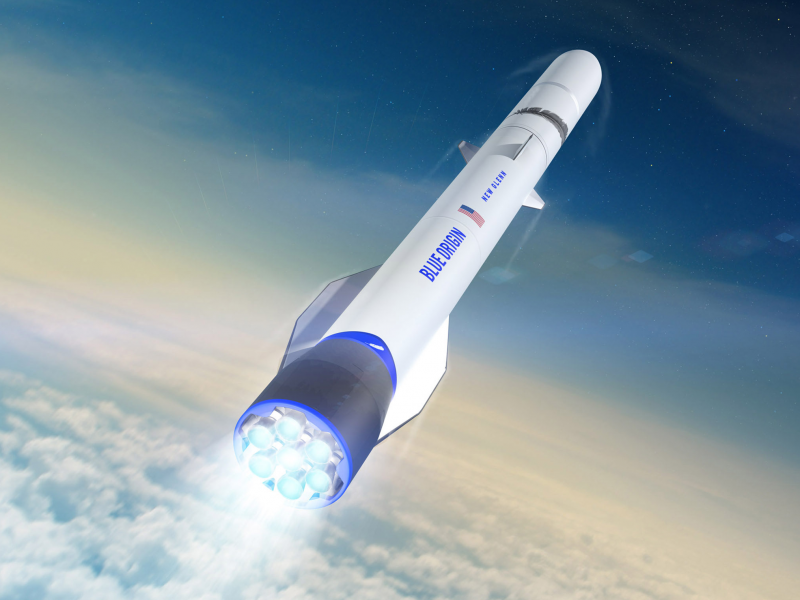
Although the lander was a model, Bezos did unveil an actual rocket engine, called BE-7, which is designed to power Blue Moon landers.
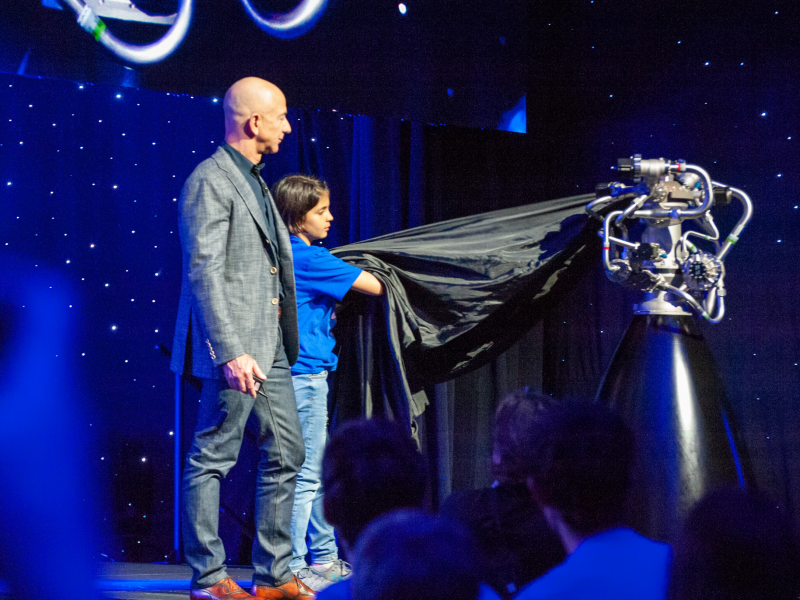
Bezos described BE-7 as a flexible and "very high-performance engine" that Blue Origin may try lighting up for the first time this summer. "I can't wait for that first hot-fire," Bezos said.
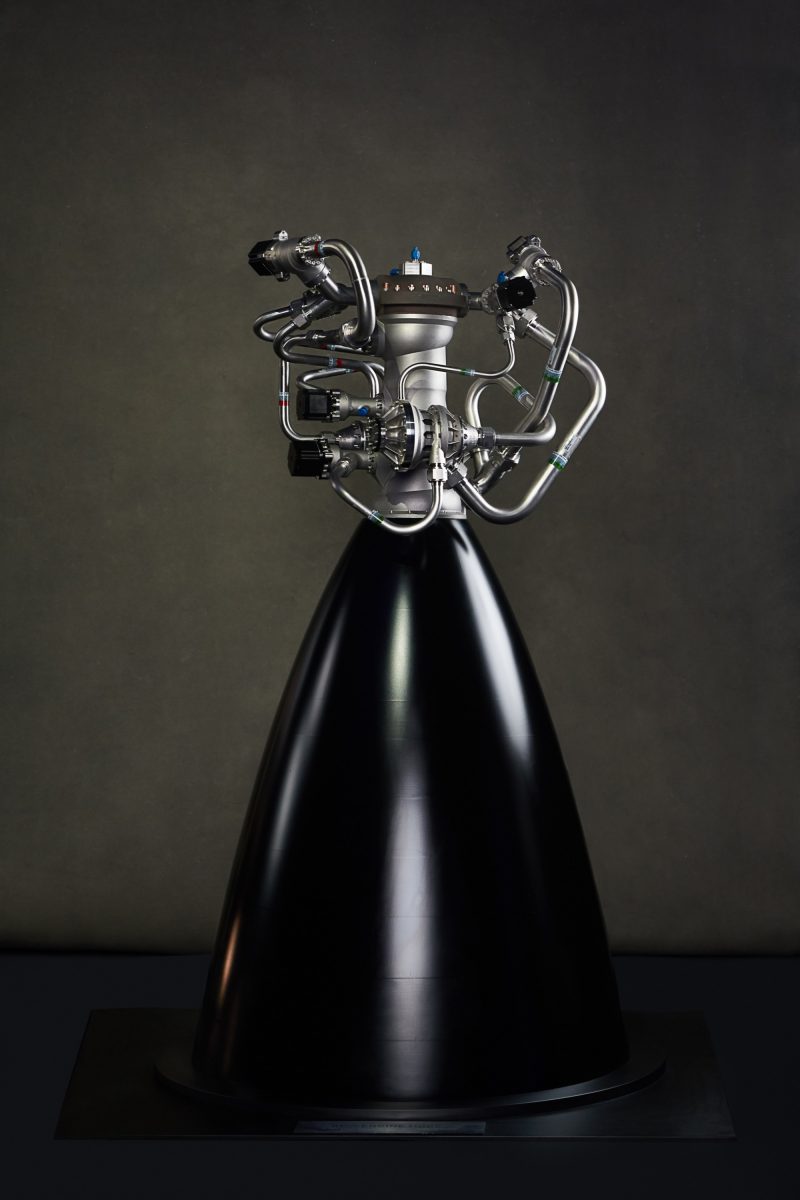
The first Blue Moon landers should be able to drop off up to 4 tons (3.6 metric tonnes) of payload. The top deck, Bezos said, is also flat and highly configurable for maximum flexibility.
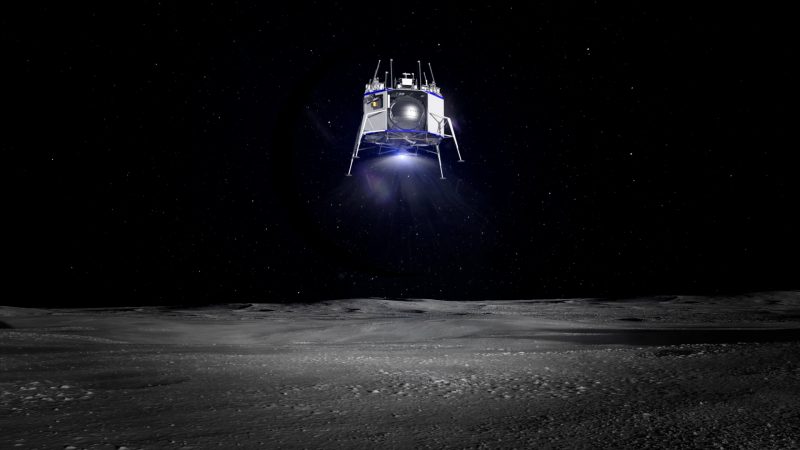
That would allow it to serve as a lunar cargo ship full of supplies, tools, small robots, and even roving vehicles for future crew members.
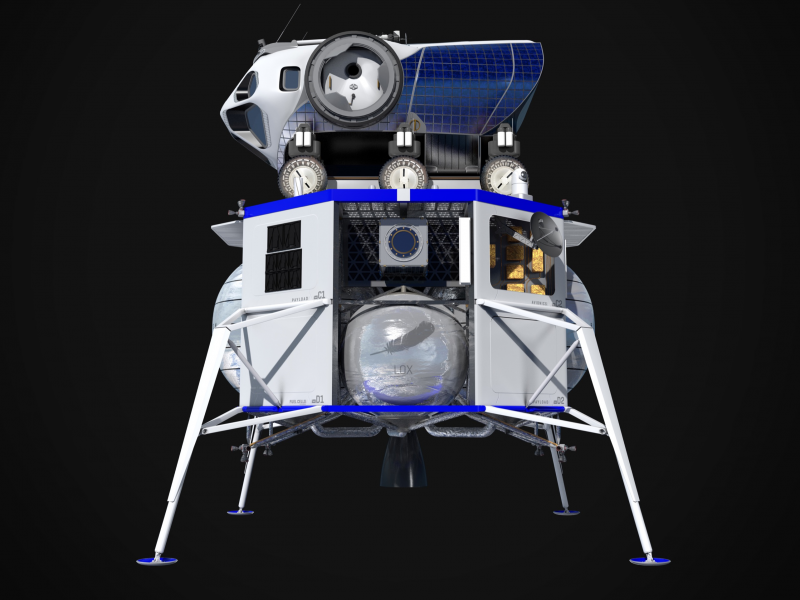
Bezos said a more powerful variant could handle payloads weighing up to 7 tons (6.5 metric tonnes): enough for a crewed ascent module.
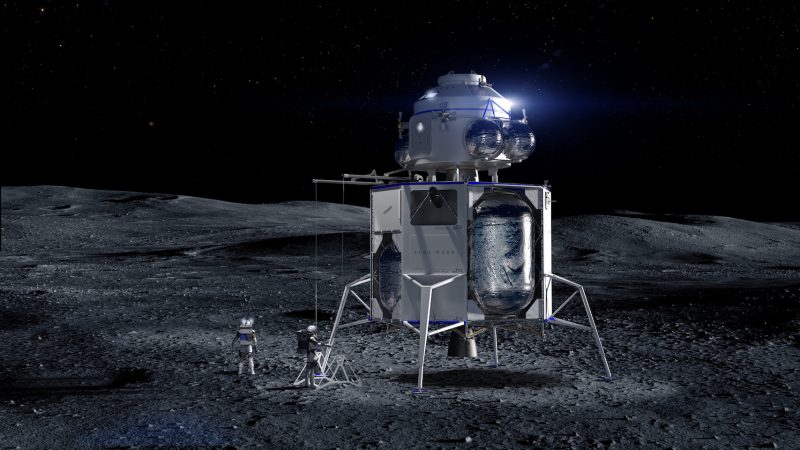
Bezos added that Blue Origin has a three-year head-start on a lunar lander and could meet NASA's desire to send astronauts back to the moon by 2024.
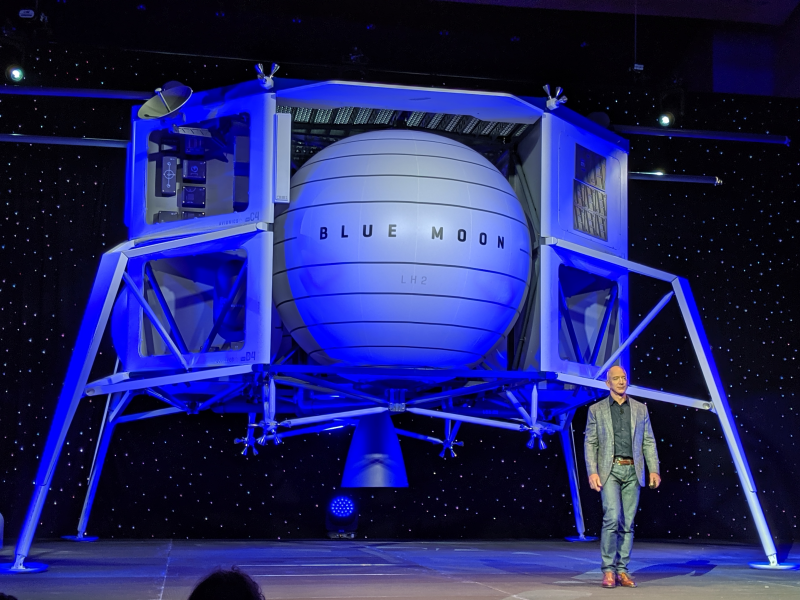
Yet Blue Moon is just an early part of a larger plan for Blue Origin. Bezos expects his company, using New Glenn and Blue Moon, to pave a relatively affordable road into space.
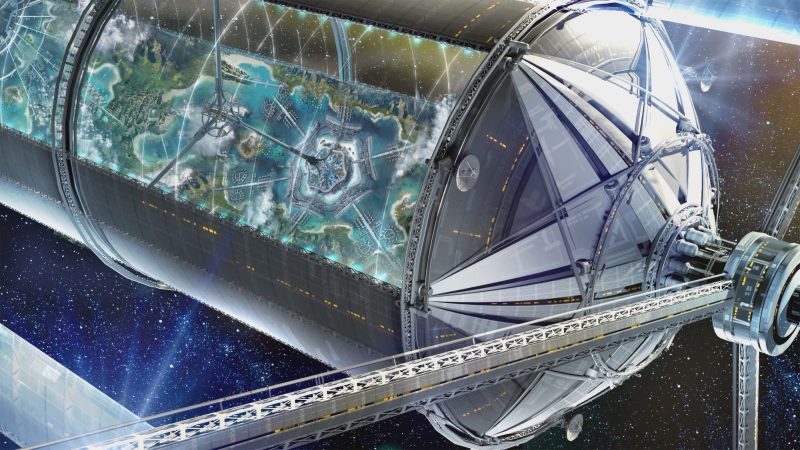
Bezos hopes future generations will figure out how to build ambitious "O'Neill" space colonies that emulate conditions on Earth. The ultimate goal: Move heavy industry into space and return Earth to a more natural state.
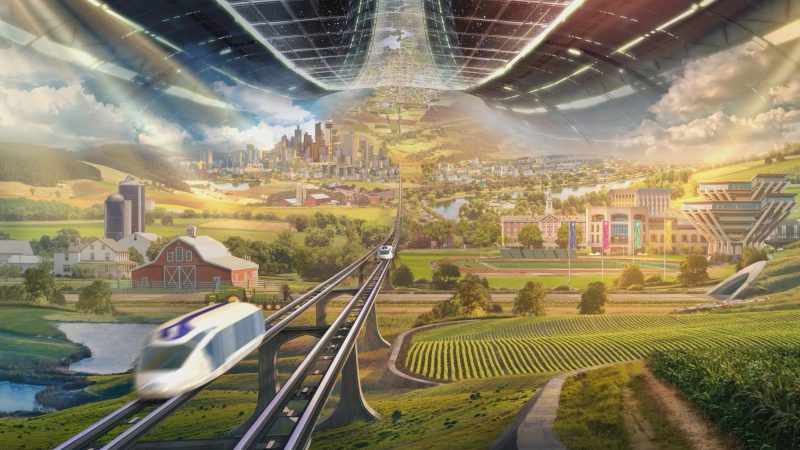
"Please make no mistake about this: Earth is the best planet. It isn't close. We do need to protect it, it's essential, it's our job. We're now big enough to hurt this planet. We have to use the resources of space," he said. "We must have a future for our grandchildren and their grandchildren of dynamism — we cannot let them fall prey to stasis and rationing."
